Maybe this missile will flying through the air of Il-2 one day
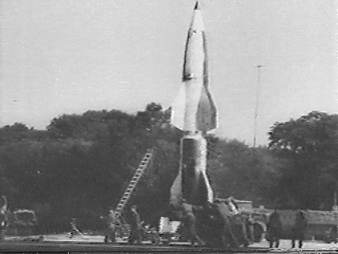
A Wasserfall W-5 is getting pushed along to a launch site
The Wasserfall was a World War II guided surface-to-air missile developed at Peenemünde, Germany. In spite of considerable development, Wasserfall never became operational. The Wasserfall can be seen as the grandfather of the antiaircraft missile, as shortly after WWII the US developed the successful NIKE antiaircraft missile, with the help of Dr. Werner von Braun at White Sands in the New Mexico desert
Wasserfall was essentially an anti-aircraft development of the V-2 rocket, sharing the same general layout and shaping. Since the missile had to fly only to the altitudes of the attacking bombers, and needed a far smaller warhead to destroy these, it could be much smaller than the V-2, about 1/4 the size. The Wasserfall design also included an additional set of fins located at the middle of the fuselage to provide extra maneuvering capability.
Unlike the V-2, Wasserfall was designed to stand ready for periods of up to a month and fire on command, therefore the volatile liquid oxygen used in the V-2 was inappropriate. A new engine design, developed by Dr. Walter Thiel, was based on Visol and SV-Stoff. This hypergolic mixture was forced into the combustion chamber by pressurizing the fuel tanks with nitrogen gas released from another tank. Wasserfall was to be launched from rocket bases (code-named Vesuvius) that could tolerate leaked hypergolic fuels in the event of a launch problem.
Guidance was to be a simple radio control manual command to line of sight (MCLOS) system for use against daytime targets, but night-time use was considerably more complex because neither the target nor the missile would be easily visible. For this role a new system known as Rheinland was under development. Rheinland used a radar unit for tracking the target and a transponder in the missile for locating it in flight, read by a radio direction finder on the ground). A simple analog computer guided the missile into the tracking radar beam as soon as possible after launch, using the transponder to locate it, at which point the operator could see both "blips" on a single display, and guide the missile onto the target as during the day. Steering during the launch phase was accomplished by four graphite rudders placed in the exhaust stream of the combustion chamber, and (once high airspeeds had been attained) by the four air rudders mounted on the rocket tail. Commands were sent to the missile using a modified version of the "Kehl-Strassburg" (code name Burgund) joy-stick system used to direct Henschel Hs 293 glide bomb, which had some significant successes against allied ships in the Mediterranean.
The original design had called for a 100 kg warhead, but because of accuracy concerns it was replaced with a much larger one (306 kg) based on a liquid explosive. The idea was to create a large blast area effect amidst the enemy bomber stream, which would conceivably bring down several airplanes for each missile deployed. For daytime use the operator would detonate the warhead by remote control.
Conceptual work began in 1941, and final specifications were defined on November 2, 1942. The first models were being tested in March 1943, but a major setback occurred in August 1943 when Dr. Walter Thiel was killed during the bombing of Operation Hydra, the start of the Operation Crossbow bombing campaign against V-2 production. After the first successful firing (the third prototype) on March 8, 1944, three Wasserfall trial launches were completed by the end of June 1944. A launch on January 8, 1944 was a failure, with the engine "fizzling" and launching the missile to only 7 km of altitude at subsonic speeds. The following February saw a successful launch which reached a speed of 770 m/s (2,800 km/h) in vertical flight. Thirty-five Wasserfall trial firings had been completed by the time Peenemünde was evacuated on February 17, 1945
Manufacturer: Flak-Versuchskommando Nord, EMW Peenemünde
Unit cost: 7,000–10,000 Reichsmark
Produced: March 1943
Specifications
Weight: 3,700 kilograms (8,200 lb)
Length: 7.85 metres (25.8 ft)
Diameter: 2.51 metres (8 ft 3 in)
Warhead: 235 kilograms (520 lb)
Engine: liquid-fueled rocket motor
Operational range: 25 kilometres (16 mi)
Speed: 770 metres per second (1,700 mph)
Guidance system: MCLOS (Manual Command to Line Of Sight)
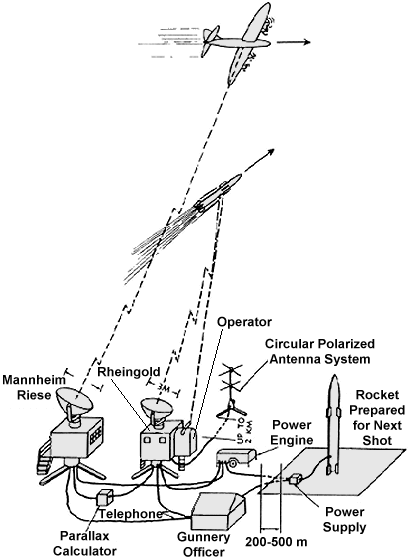
The Wasserfall Elsass control system
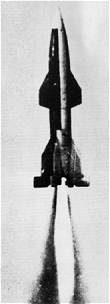
A Wasserfall W-5 shortly after launch
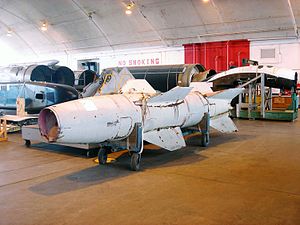
A Wasserfall rocket displayed at National Museum of the U.S. Air Force
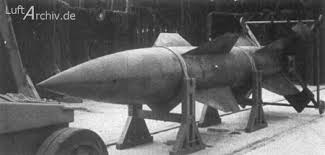
Here is a video
 Author
Topic: Wasserfall Missile (Read 4001 times)
Author
Topic: Wasserfall Missile (Read 4001 times)


